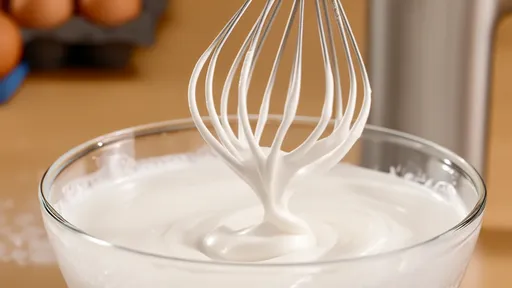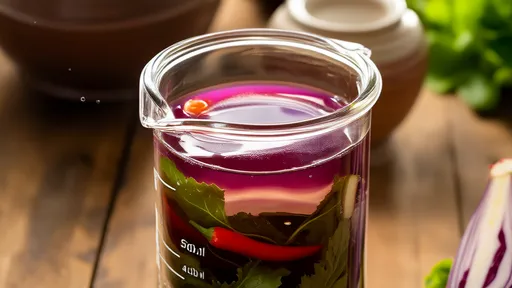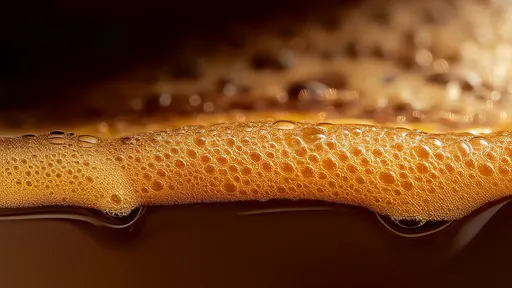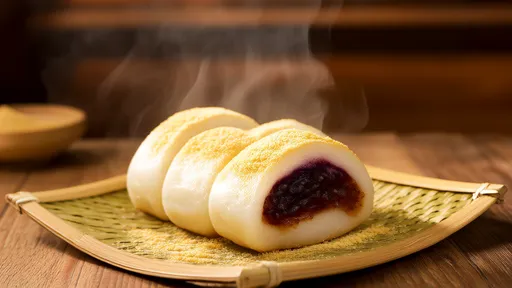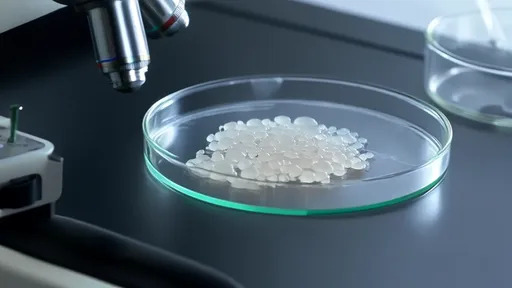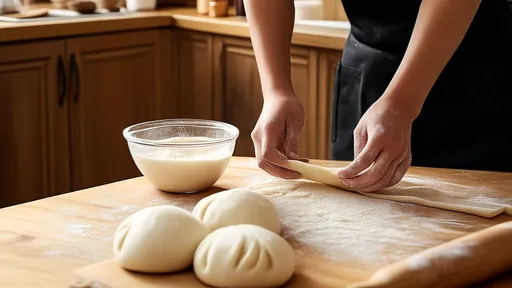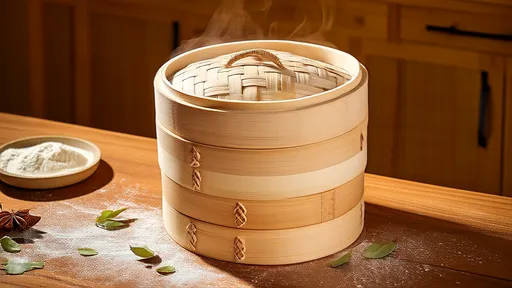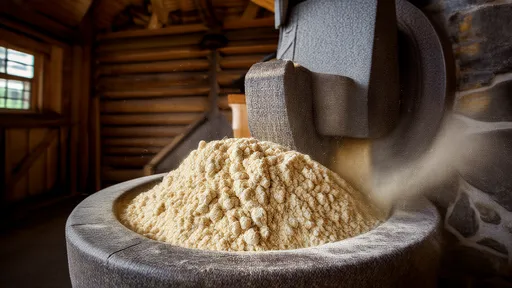The bamboo steamer, a centuries-old culinary tool cherished across Asian kitchens, operates on principles far more sophisticated than its simple appearance suggests. Among its most fascinating phenomena is the so-called "bamboo steamer effect" – a self-regulating mechanism that prevents the dreaded condensation drip-back, ensuring perfectly textured dumplings, buns, and fish every time. This natural engineering marvel has captivated chefs and scientists alike, revealing how traditional wisdom often anticipates modern food science.
At the heart of this phenomenon lies bamboo’s unique cellular structure. Unlike metal or plastic steamers, bamboo’s vertical fibers create micro-channels that guide condensation toward the steamer’s walls. As steam rises from boiling water below, it hits the cooler lid and condenses. Here’s where the magic happens: instead of forming large droplets that would fall back onto food (resulting in soggy spots), the water molecules adhere to the bamboo’s fibrous network and descend along the inner walls like liquid acrobats in a microscopic circus.
The angle of the steamer’s dome plays a crucial role. Traditional designs feature gently sloping lids that encourage water droplets to migrate outward. Historical records from China’s Song Dynasty reveal that artisans would test lid curvatures by observing water movement patterns, long before fluid dynamics became a scientific discipline. This empirical refinement over generations created what we now recognize as optimal condensation control.
Bamboo’s natural hydrophobicity adds another layer of protection. The plant’s silica-rich surface creates a subtle water-repellent effect, preventing droplets from growing too large. Researchers at the National University of Singapore found that bamboo steamers maintain 40-50% less surface moisture compared to stainless steel alternatives during identical steaming conditions. This explains why professional dim sum chefs insist on bamboo – the material actively participates in the cooking process rather than merely containing it.
Modern attempts to replicate this effect in synthetic materials often fall short. A 2018 study published in the Journal of Food Engineering tested various polymer coatings that mimicked bamboo’s properties. While some reduced drip-back by 30%, none matched the natural material’s performance. The researchers concluded that bamboo’s combination of porosity, thermal insulation, and surface chemistry creates a synergistic effect that synthetic materials struggle to duplicate.
Temperature regulation forms another critical component. Bamboo’s excellent thermal insulation maintains a more consistent internal environment than metal steamers, which often create temperature fluctuations that exacerbate condensation. The material absorbs excess steam when heat spikes and releases moisture during temperature dips, functioning like a biological climate control system. This buffering capacity explains why foods steamed in bamboo cook more evenly despite variable stove heat.
Cultural transmission has preserved these design principles across generations. In Guangzhou’s historic dim sum kitchens, master chefs still teach apprentices to select steamers based on the sound they make when tapped – a hollow resonance indicates optimal wall thickness for condensation control. Such tacit knowledge, accumulated over centuries of trial and error, represents an intangible culinary heritage now being decoded by materials scientists.
The environmental implications are equally compelling. Bamboo grows rapidly without pesticides, and a well-maintained steamer can last decades – unlike plastic alternatives that degrade after repeated heat exposure. This sustainability aspect has sparked renewed interest among eco-conscious restaurants worldwide. From Copenhagen to California, chefs are adopting bamboo steamers not just for superior results, but as a statement against disposable kitchenware culture.
Contemporary kitchen designers are drawing inspiration from this ancient technology. Several high-end appliance manufacturers have introduced steam ovens with condensation management systems based on bamboo steamer principles. These systems use precisely angled ceramic surfaces and micro-grooves to redirect moisture, proving that sometimes the most advanced solutions come from studying nature’s time-tested designs.
For home cooks seeking authentic results, understanding this effect transforms steaming from a mundane task into a scientific art. Pre-soaking the steamer before use swells the bamboo fibers, enhancing their water-channeling capacity. Arranging foods with adequate spacing allows for proper airflow and condensation runoff. Even the type of cloth used to line the steamer (traditionally muslin) affects moisture distribution – another detail perfected through centuries of culinary evolution.
As molecular gastronomy meets traditional techniques, the humble bamboo steamer stands as a testament to how indigenous innovation often precedes scientific explanation. Its ability to manage condensation through integrated material properties and intelligent design continues to inspire both chefs and engineers, proving that some ancient solutions remain unsurpassed in our high-tech age.
The art of baking a perfect cake relies heavily on understanding the science behind its structure. Among the many factors that contribute to a cake's texture, the uniformity of air pockets within the cake crumb stands out as a critical element. This characteristic is largely influenced by the foaming properties of proteins in the batter, particularly those found in eggs. The way proteins trap and stabilize air bubbles during mixing directly impacts the final product's lightness, tenderness, and overall mouthfeel.
The world of sensory evaluation is as intricate as it is fascinating, particularly when it comes to understanding how we perceive flavors and aromas. Among the myriad of compounds that contribute to our sensory experiences, vanillin—the primary component of vanilla extract—stands out for its widespread use and complex interaction with our senses. The concept of odor threshold plays a pivotal role in determining how much of this compound is needed for it to be detectable, and it varies significantly depending on the medium in which it is presented.
The world of chili peppers is as diverse as it is fiery, with each variety packing its own unique punch. At the heart of understanding this heat lies the Scoville Scale, a measurement that quantifies the spiciness of peppers. Developed by Wilbur Scoville in 1912, this scale remains the gold standard for gauging the capsaicin content—the compound responsible for that burning sensation—in different peppers. From the mild bell pepper to the mind-numbing Carolina Reaper, the Scoville Scale offers a fascinating glimpse into the spectrum of heat that chili enthusiasts chase.
The culinary world has long celebrated the magic that happens when certain ingredients come together, creating flavors greater than the sum of their parts. One such pairing—chicken broth and mushrooms—exemplifies the scientific and gastronomic phenomenon known as umami synergy. This dynamic duo has been a staple in kitchens across cultures, from French consommé to Japanese ramen, and its power lies in the way their compounds interact to amplify savory depth.
The world of fermented foods is a fascinating intersection of microbiology, chemistry, and culinary tradition. Among these, kimchi stands out not only for its bold flavors but also for the intricate biochemical processes that transform raw vegetables into a probiotic-rich delicacy. At the heart of this transformation lies a phenomenon known as acetic acid penetration, which creates a dynamic pH gradient during fermentation. This process is far more than a simple souring of cabbage—it's a carefully orchestrated dance between microbial communities and their chemical environment.
The turbidity of fruit juice, often perceived as a mark of freshness and natural quality, is primarily governed by the suspension mechanisms of pulp particles. These tiny fragments of fruit flesh, ranging from cellular debris to larger fibrous clusters, create the characteristic cloudiness that consumers associate with premium products. Behind this seemingly simple phenomenon lies a complex interplay of physical forces, biochemical interactions, and processing variables that determine whether pulp remains evenly dispersed or separates over time.
The fizz in your soda isn't just about taste—it's a carefully engineered dance between gas and liquid that begins unraveling the moment you twist open the cap. Few consumers realize how precisely carbonation levels are calibrated, or how dramatically pressure dynamics shift during that first explosive release. This invisible physics experiment in every bottle follows predictable but fascinating patterns that beverage scientists have spent decades mapping.
The world of espresso is as complex as it is captivating, with its rich flavors and aromatic allure. At the heart of this complexity lies a seemingly simple yet scientifically intricate component: the crema. This golden-brown layer of foam that crowns a well-pulled shot of espresso is not just a visual delight but a fascinating study in colloidal stability. The interplay of oils, gases, and solids in espresso crema reveals a delicate balance that defines the quality and texture of the coffee.
The phenomenon of "cold turbidity" or "cream down" in tea has long intrigued both tea connoisseurs and scientists alike. This natural occurrence, where tea liquor turns cloudy upon cooling, is not merely an aesthetic curiosity but a window into the complex chemistry of tea. Recent advancements in optical measurement techniques have enabled researchers to quantify this phenomenon through turbidity detection based on tea liquor transmittance, opening new avenues for quality assessment and understanding of tea's molecular interactions.
The world of instant noodles thrives on convenience, but behind that simplicity lies a carefully engineered marvel of food science. At the heart of this innovation sits pregelatinized starch—an unsung hero that transforms dehydrated noodles into a steaming bowl of comfort within minutes. Unlike traditional starch, pregelatinized starch undergoes a thermal and mechanical treatment that breaks down its granular structure, allowing it to absorb water rapidly. This property is pivotal for instant noodles, where rehydration speed and texture determine consumer satisfaction.
The world of traditional fermented foods holds countless microbial secrets, and few are as fascinating as the complex ecosystem of laomian – the centuries-old sourdough starter that gives Chinese steamed bread its distinctive character. While modern bakeries increasingly rely on commercial yeast, artisanal producers across northern China still maintain their family laomian cultures like precious heirlooms, passing down not just techniques but living microbial communities through generations.
The sticky, chewy texture of glutinous rice cakes, known as mochi in Japanese or nuòmǐ cí in Chinese, has long been a staple in East Asian cuisine. These delectable treats, often enjoyed during festivals or as everyday snacks, owe their unique consistency to a key component: amylopectin, the branched-chain starch found in glutinous rice. However, anyone who has left mochi or Chinese mochi cakes (糍粑) at room temperature for a few hours will notice an unmistakable transformation—the once-soft and pliable dessert gradually hardens, becoming tougher and less enjoyable. This phenomenon, often referred to as retrogradation, is a fascinating interplay of chemistry, physics, and culinary science.
The art of cooking perfect rice lies in understanding the gelatinization temperature of different japonica rice varieties. This scientific parameter, often overlooked by home cooks, determines the precise moment when starch granules absorb water and swell—fundamentally shaping texture, flavor release, and nutritional accessibility. Recent studies across Asian research institutions reveal how subtle genetic variations in short-grain rice cultivars create distinct thermal behaviors during cooking, challenging the one-size-fits-all approach to water ratios and heat application.
The art of crafting perfect hand-pulled noodles lies in mastering the delicate balance between gluten development and dough relaxation. Among the many variables that influence noodle extensibility, resting time stands as one of the most critical yet often overlooked factors. This silent alchemy occurring during the waiting period transforms a stiff, unyielding mass into an elastic, cooperative material ready to be stretched into silky strands.
For generations, home cooks and professional chefs alike have relied on stainless steel containers for pickling and food storage. The material's reputation for durability and corrosion resistance makes it a seemingly ideal choice. But when acidic ingredients like vinegar enter the equation, questions arise about potential metal leaching and food safety. Understanding the interaction between stainless steel and pickling brines requires a deeper dive into metallurgy, chemistry, and culinary science.
The bamboo steamer, a centuries-old culinary tool cherished across Asian kitchens, operates on principles far more sophisticated than its simple appearance suggests. Among its most fascinating phenomena is the so-called "bamboo steamer effect" – a self-regulating mechanism that prevents the dreaded condensation drip-back, ensuring perfectly textured dumplings, buns, and fish every time. This natural engineering marvel has captivated chefs and scientists alike, revealing how traditional wisdom often anticipates modern food science.
The age-old practice of stone milling has long been revered for its ability to produce flour that retains the natural goodness of whole grains. Unlike modern industrial milling methods, which often prioritize speed and shelf life, stone grinding operates at a slower pace, preserving the integrity of the grain’s nutritional profile. One of the most significant advantages of this traditional method is its ability to maintain higher levels of dietary fiber in whole wheat flour—a component essential for digestive health, blood sugar regulation, and overall well-being.
